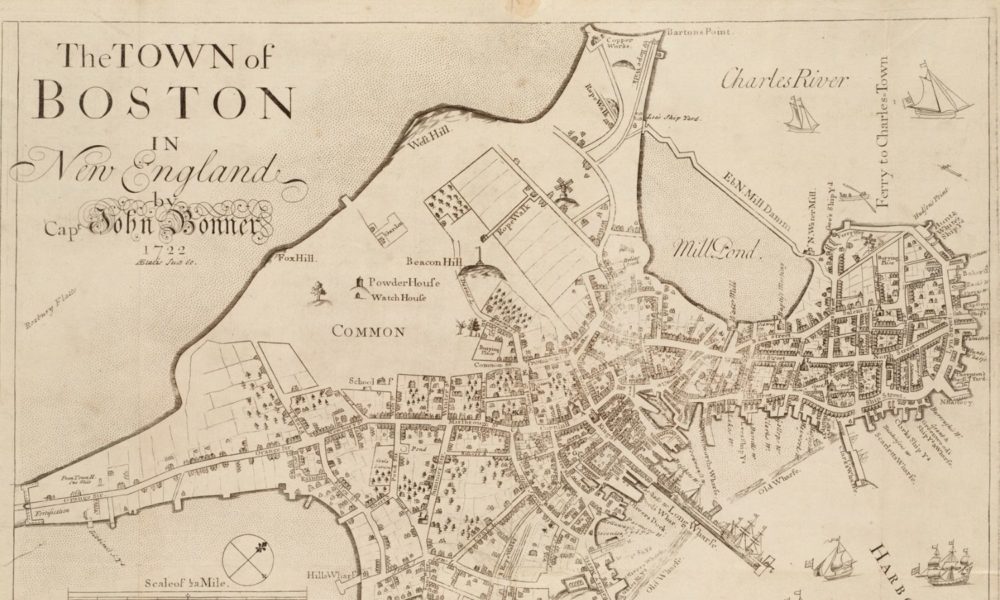As we’ve seen during the Omicron wave and throughout the COVID-19 pandemic, vaccines can play a powerful role in protecting people’s health and safety and slowing the spread of infectious disease. Unfortunately, the history of vaccination, like much of history of science today, focuses mostly on the accomplishments of white men, and largely ignores or downplays the important scientific contributions of people of color, women, LGBTQ+ individuals, and other marginalized groups.
In honor of Black History Month, I would like to highlight the work of Onesimus, an enslaved man who lived in Boston in the early 1700s. Onesimus helped save hundreds of people in Boston from the horrors of smallpox. His contributions to science reverberate to this day, and his knowledge led to what became the first vaccine-related study in the United States. The techniques employed during this study are similar to those we still use hundreds of years later to determine if a vaccine is effective against an infectious disease.
Enslavement obscured Onesimus’s early history
We do not know the early history of Onesimus. But he was likely kidnapped from his homeland in North or West Africa, sold into slavery, and brought to the Massachusetts Bay colony by ship. Onesimus is not the name he was born with. As is true for so many enslaved individuals, the only recorded name in historical texts is the name bestowed to him by his enslaver. Onesimus means “useful” and therefore the name links him to the property status his enslaver conferred upon him as.
Massachusetts was the center of the early slave trade in the United States and was the first American colony to codify the right to own human chattel in 1641. In 1700, there were about 1,000 enslaved individuals living in Massachusetts.
In 1706, Onesimus was purchased by a church congregation in Boston and “gifted” to Cotton Mather, a prominent Puritan minister. You may already be familiar with Cotton Mather; he was a prominent and infamous figure during the Salem Witch Trials.
“Forever free of the fear of contagion”
In a 1716 letter to the Royal Society of London, Mather described a conversation he had with Onesimus about smallpox. At the time, white individuals often asked enslaved individuals if they previously had smallpox, since enslaved people were considered to be “worth” more if they had been previously exposed (people who survived smallpox did not get the disease again). When Mather asked Onesimus whether he had had smallpox, Onesimus replied, “Yes and no.”
Onesimus went on to state that as a child in Africa, he “had undergone an operation, which had given him something of the smallpox and would forever preserve him from it… and whoever had the courage to use it was forever free of the fear of contagion.” Onesimus described the operation, which involved taking pus from a smallpox patient and scraping it into his arm. It gave him a mild case of the disease and made him forever immune to smallpox. Onesimus said it was a common practice in the African community he grew up in and had been practiced for hundreds of years.
Onesimus was describing the process of variolation, a method of inoculation to protect people from smallpox. Variolation, a precursor to vaccination, was practiced for hundreds of years in China, parts of Africa, and the Middle East, though it was relatively unknown in England and the American colonies in the early 1700s. Variolation contained its risks, but it was considered far less deadly than natural smallpox. It usually resulted in provoking a mild form of the disease while conferring lifelong immunity to it.
Racism almost derailed one of the world’s first clinical studies
Onesimus faded from public record once he purchased his freedom in 1716. However, Cotton Mather went on to use the information that Onesimus provided to try to protect the people of Boston during the next smallpox epidemic in 1721. Mather championed the use of variolation (known as smallpox inoculation at the time) but faced fierce resistance from other white individuals living in Boston. While some of the resistance from white Bostonians was based on scientific uncertainty or on religious grounds, there is no mistaking that much of the criticism stemmed from their racist inability to view African individuals as having valuable scientific knowledge.
William Douglas, the only person in Boston with a medical degree at the time, and James Franklin, the older brother of Benjamin Franklin who ran a local newspaper, began a racist misinformation campaign. They claimed that enslaved Africans were trying to kill their enslavers by tricking them into infecting themselves with smallpox. Mather and Zabdiel Boylston, a physician who supported the technique, were vilified for taking medical advice from an African individual. In reference to Black people, Douglas stated, “There is not a Race of Men on Earth [filled with] more False Liars.” Someone even threw an unexploded grenade through Mather’s window because of his promotion of inoculation. In what may be the first precursor to later anti-vaccination protests, Bostonians took to the streets to oppose Boylston’s use of smallpox inoculations for his son and two enslaved individuals.
After the epidemic ended in 1722, Mather and Boylston performed one of the first quantitative analyses in medicine ever recorded. Boylston managed to inoculate 280 of the city’s 11,000 residents. Of those inoculated, only six people died (two percent). Among the non-inoculated population, 6,000 cases of smallpox occurred, with 850 people dying of the disease (14 percent). The clinical analysis compared the outcomes of a control and an experimental group, making it similar to our current assessments of the safety of vaccines and other medical interventions. The results indicated that people who were inoculated were seven times more likely to survive smallpox. Because of this evidence, inoculations became a common practice in Boston and throughout many US states, until they were replaced by the development of the smallpox vaccine in 1796.
Onesimus’s legacy lives on
For decades, the story most often told about these events was dominated by whiteness and the erasure of Black people. Mather and Boylston were portrayed as heroes while Onesimus and his African homeland were relegated to the background. Performing a clinical analysis of a new medical treatment and being open to utilizing Indigenous knowledge from an African enslaved individual were indeed achievements. But these men should not be lauded simply as heroes; they were men with complicated legacies. For instance, Boylston forced the inoculation procedure on two enslaved individuals he owned, thereby furthering a long tradition of using Black bodies in medical experiments without their consent.
We may never know how Onesimus felt about the role he played in saving the lives of numerous people in the United States. But Onesimus’s contributions to science cannot be denied. Despite his captivity and bondage, Onesimus was instrumental in fostering awareness of the efficacy of variolation in the United States, a development that helped lead directly to one of the first US scientific studies in medicine and, eventually, to the development of the smallpox vaccine. It’s quite a legacy, especially considering that, in 1980, the World Health Organization declared that, thanks to that vaccine, smallpox – one of the deadliest and most feared diseases in all of human history – was officially eradicated from the planet.

